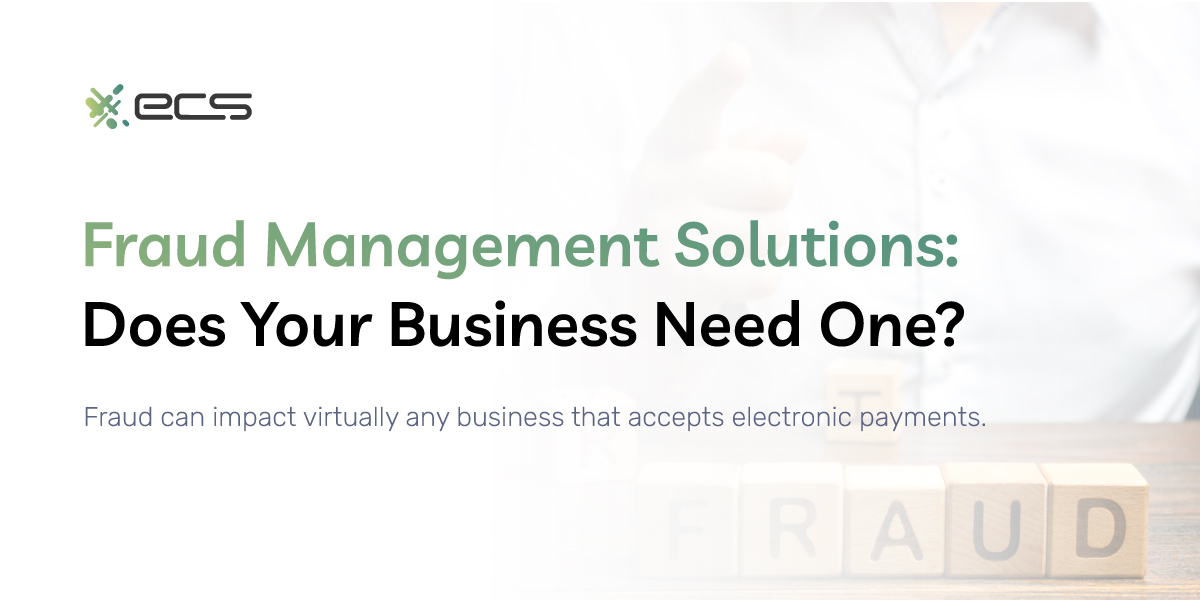Fraud can impact virtually any business that accepts electronic payments. While occasional fraud is simply a part of doing business, regular or excessive fraud requires immediate action. When this happens, businesses need to seek out a fraud management solution. With fraud management, the goal is to use various advanced methods to prevent fraud losses.
All merchants will use some kind of payment fraud management, but it’s usually the default tool built into their payment gateway. A fraud management solution is when your business goes above and beyond to be more proactive when detecting fraud.
This is done through analytics to flag certain transactions based on previous fraud attempts or industry standard parameters. You can also use filters to block certain transactions or hold them for manual review.
Finally, a fraud prevention solution can also include education and training for your employees if they fill a customer-facing role that deals with electronic payments. Businesses can use all the techniques available or the ones most relevant to the type of fraud they face. But whatever method a business uses, the goal is to mitigate the risk of fraud as much as possible while still allowing legitimate transactions to process smoothly.
Below, we’ll outline the details of fraud management solutions and how to determine if your business needs to implement one.
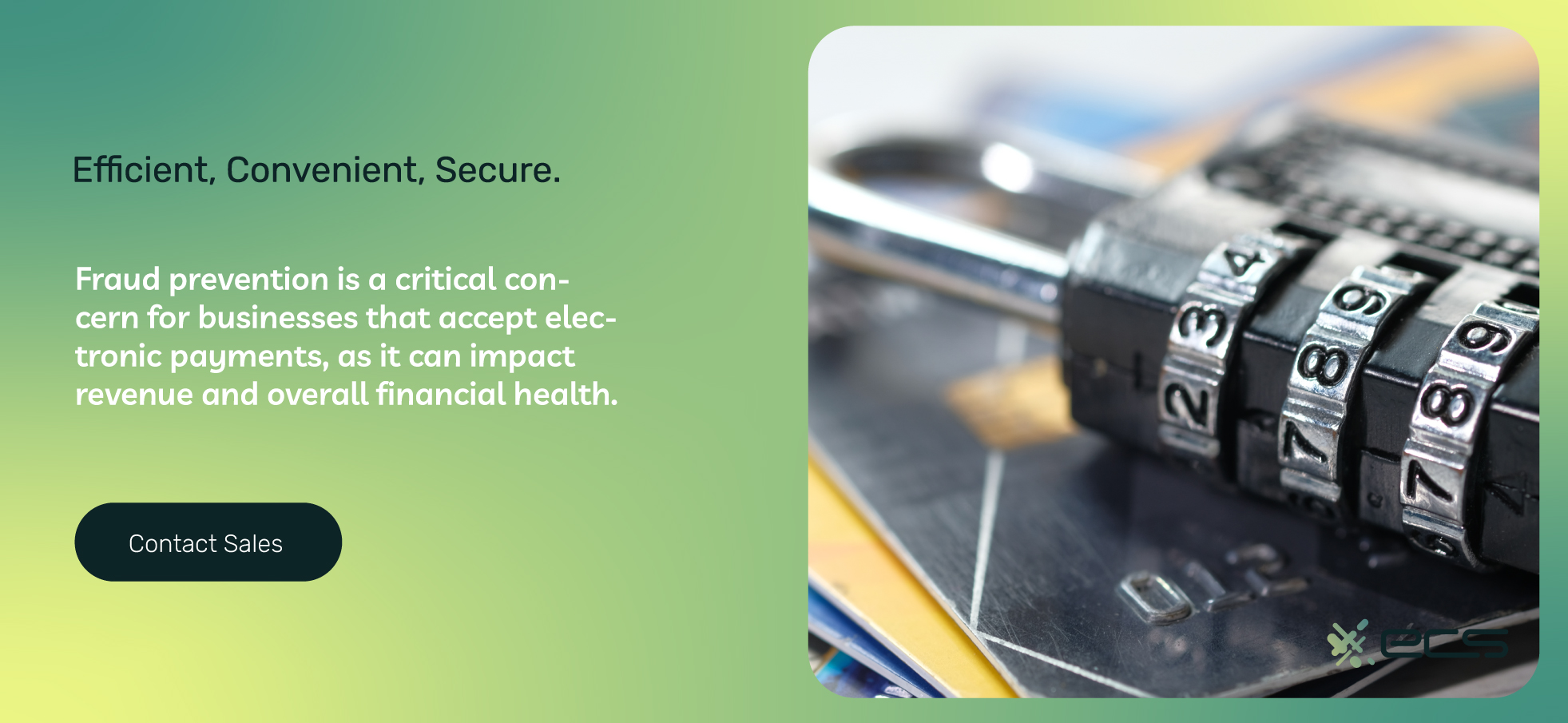
Fraud Management Best Practices
Fraud management can be a broad topic that involves many different strategies. However, there are several best practices that virtually every business can use.
These best practices help businesses in a wide variety of industries create a fraud management strategy that is tailored to their needs.
Employee Education
Your employees are often your first line of defense against fraud. Employees who interact with customers should understand different types of fraud and how to spot them.
You also want to train your employees on security best practices. Many employees with improper training may inadvertently leave your business open to fraud without any intention of doing so. These types of threats are known as “insider threats” and can pose a significant problem for any business.
Proper training and education around fraud and security help to mitigate this common insider threat.
As part of your employee education program, you want to implement a dedicated contact that employees can reach out to if they suspect fraud or a security issue. Employees sometimes disregard suspicious activity simply because they don’t know who to contact or notify.
Real-Time Data Analytics
Today, machine learning tools and AI systems help businesses track their data in real time and prevent fraud.
This type of real-time data analysis can find problem areas or potentially fraudulent activity before anyone in your organization realizes it. Real-time data analytics will compare trends with historical data to spot anomalous activity.
As with any fraud management system, the goal is to prevent and stop fraud immediately. Real-time analytics provides the fastest and most cost-effective way to spot anomalies as early as possible.
Third-party service providers offer real-time analytics, and certain payment processors or gateways also offer these tools. If your payment processor offers these services, opt-in and integrate them with your current payment workflow.
Build Relationships With Your Payment Partners
If you’re a merchant, you should already have a strong relationship with your payment processor. Your payment processor is a vital financial institution, and they often have advanced knowledge of growing fraud trends and mitigation measures.
Contact your payment processor and ask for help implementing a fraud management strategy. They can examine your current processing profile and offer tips based on your industry and processing volumes. They can also help you secure your data and account to prevent data breaches or account takeovers.
If your payment processor can’t help you, you may want to look for a new merchant account with a new provider.
Stay Current With Industry Trends
Fraud can often strike specific industries when vulnerabilities are found. For example, a product you sell may suddenly become a target for fraud based on resale value or other issues.
By keeping track of current trends in your industry, you can be proactive when new fraud threats emerge, So if a product or service you sell is suddenly a target for fraud, you can place enhanced filters or manual checks on those specific transactions.
Manual Audits
While automated fraud detection can handle a significant portion of the workload, manual audits remain essential when developing a fraud management solution.
You can perform manual audits at regular intervals that make sense for your specific business. Quarterly or bi-annually may work for some businesses that have more exhaustive audits. For smaller businesses, you can perform these audits monthly.
The goal of an audit is to ensure that no process has fallen through the cracks and is lagging. Managing a business is challenging; sometimes, certain policies or processes simply become outdated, and it takes a security breach before anyone realizes it.
A manual audit helps you spot these outdated or insecure policies and processes before a problem arises.
Your audits should also include an overview of your metrics and KPIs. You want to look for changes that indicate a problem, such as increased chargebacks.
You should also use these audits to measure the success of your fraud management strategy. After implementing a fraud management solution, your regular audits should reveal improvements.
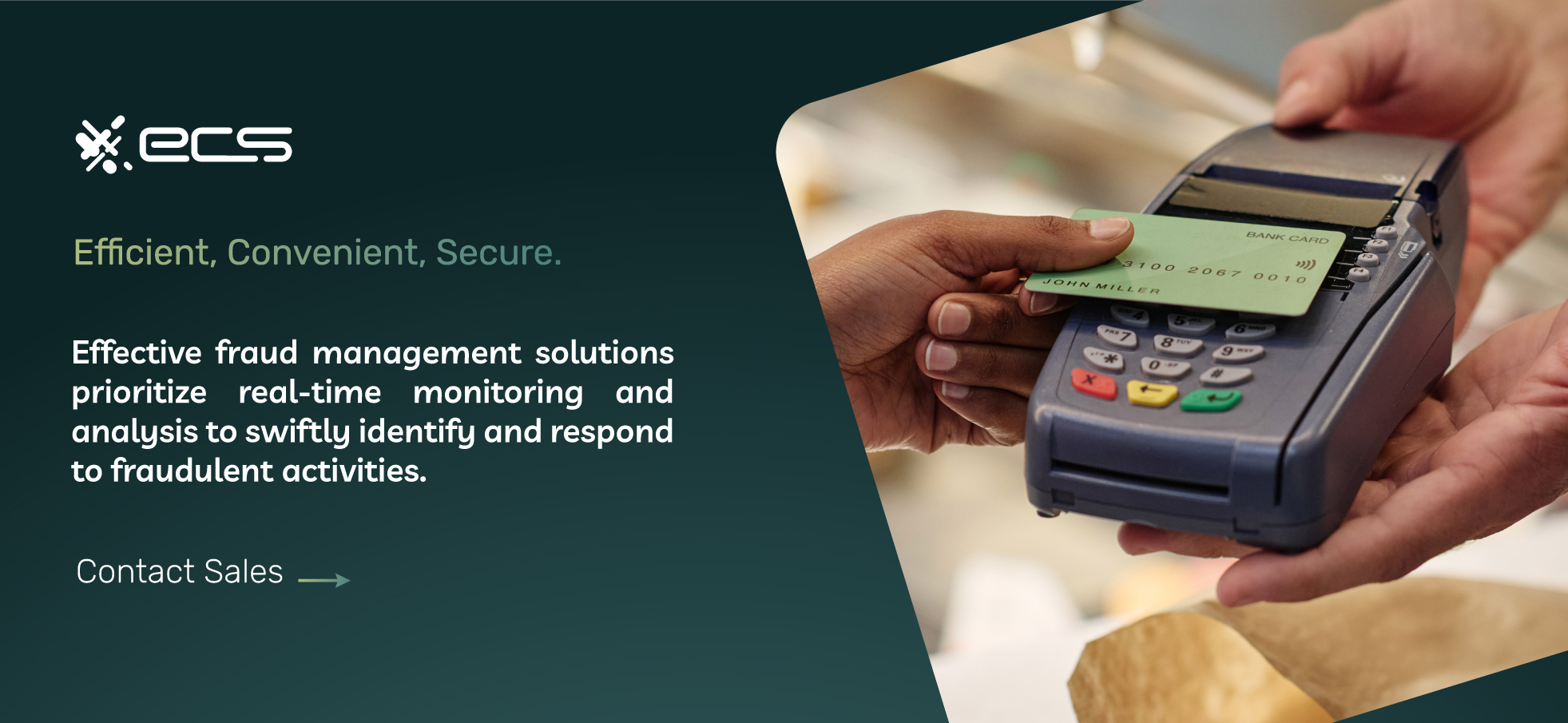
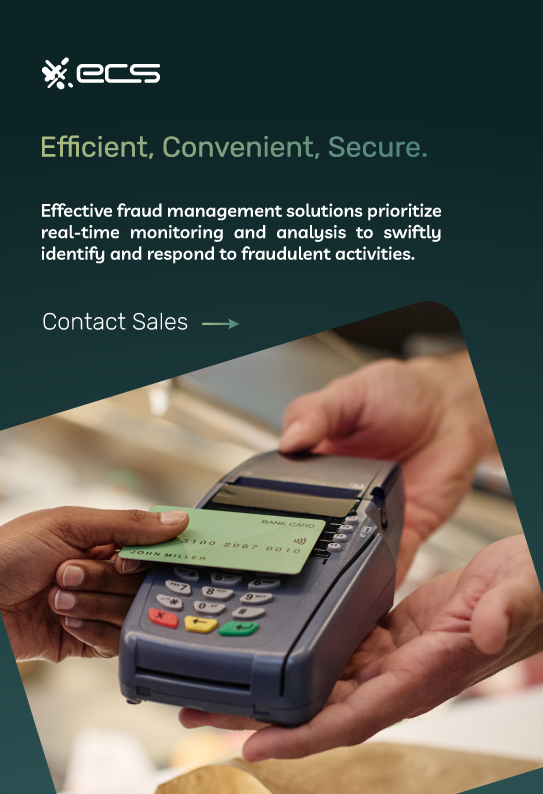
Use A Layered Approach
The key to fraud management is to use a combination of these best practices that best suit your business. No one solution or best practice fits every business.
Instead, you want a multi-layered approach that uses the tools most appropriate for your business. For some businesses, manual audits will be their most prominent tool. For other businesses, machine learning and analytics are central to their strategy.
Make sure that each best practice you implement is weighted for your specific business and risk profile. Then, combine these in a layered approach that provides the most protection and fail-safes.
Choosing The Right Fraud Management Solution
Your fraud management solution will depend on your industry and risk profile. Many businesses choose a mix of internal solutions and third-party services to help them develop a comprehensive fraud prevention strategy.
Your first step in choosing your overall solution will be to determine your objectives and areas for improvement. Your objectives will be specific to your industry and your business, but you should set clear goals for what you want to achieve.
By setting clear goals, you can use various metrics to measure your progress and determine whether there have been any improvements. This is especially true when using third-party services, as you don’t want to pay for a service that isn’t providing a measurable benefit.
For example, one of your goals may be to reduce chargebacks by a specific percentage. This is a clear goal you can measure over time to ensure success. Another example may be that your current fraud management is creating too many false positives, which is negatively impacting your revenue.
Once you’ve determined your objectives, you want to determine which tasks you will handle internally and which will require third-party or external service providers.
Internal Data Security
Try to determine whether your business has the staff and budget to handle data security internally, such as patching all of your software systems or ensuring hardware and servers are always up to date and secure.
If you can’t handle these duties, you may want to hire a third-party security service or IT management company.
Performing Audits
Security and fraud audits can be conducted internally or by outside vendors. There are some requirements, though, depending on your overall transaction volumes.
Businesses with higher transaction volumes may require third-party audits by an accredited security vendor. PCI DSS compliance requires third-party audits for high transaction volumes.
For smaller businesses, you can often perform your own audits to track results over time and share those with vendors who provide additional fraud management services.
Overall, you want to determine which fraud management best practices you can conduct internally and using your staff.
How To Pick The Right Fraud Management Solution
You’ll need to seek out an external service provider for certain fraud management and security tasks you can’t handle internally.
A service provider can offer anything from software to full management of certain systems within your business. Below are some key areas to consider when deciding which third-party fraud management services to use.
Overall Integration Options
You want to ensure compatibility with your existing processing workflow for software-specific or SaaS fraud management software.
Some fraud management tools may not easily integrate with your current processing workflow and existing technology stack. This is usually due to your payment gateway API. Not all APIs are compatible with certain fraud management tools.
The more difficult the integration, the less likely the fraud detection software will provide the results you want.
Scalable Fraud Detection Software
Scalability is critical if you want your business to grow. Make sure your fraud management solution allows you to easily scale it as your transaction volumes grow. Not only that, when scaled, the costs should not dramatically increase in proportion to the growth.
SaaS solutions base their prices on usage. As usage increases, so do the monthly costs. Check to make sure your solution won’t drain your budget as you grow your business and transaction volume.
The Latest AI & Machine Learning Algorithms
AI & machine learning models have allowed fraud detection and prevention to become far more efficient and cost-effective at scale. The automation that these technologies bring helps to reduce manual fraud checks. But more importantly, they can help your business track fraud patterns and spot threats in real-time.
When searching for a fraud management solution, ensure that it incorporates machine learning and AI algorithms to minimize fraudulent activities.
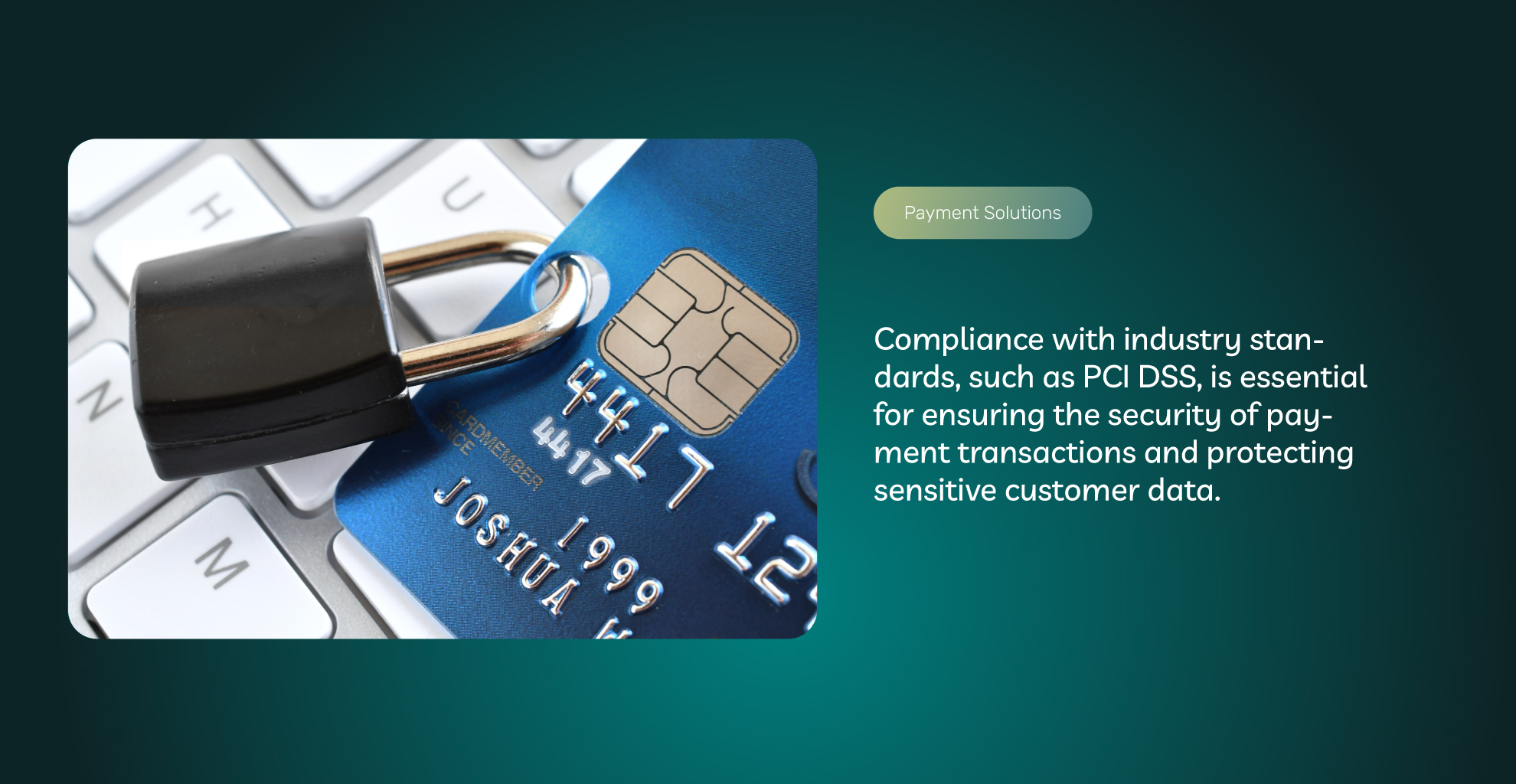
Flexibility
Your risk profile can change over time. Some businesses may have a different level of fraud protection during the busy holiday season than they do throughout the year.
Ensure your fraud solution lets you easily adjust parameters and threat levels as needed. In addition, the solution should have an easy-to-use interface so you can quickly make changes and see the results.
Customer Support
As with every software or service purchase, customer support should be a top concern. If you can’t get answers to your problems quickly, then the service will quickly become another drain on your time and resources instead of a benefit.
Check that the solution you choose has support hours that match your business hours. You’ll also want to check if they answer support questions in the format you prefer, such as phone, email, or online chat.
Finally, ask whether they use in-house customer support or outsource this task. Outsourced customer support can often leave you waiting until issues are escalated.
More Help With Fraud Management Solutions
The right fraud management solutions can save your business considerable money over the long term. An added level of fraud management can allow some businesses to continue doing business in a high-risk industry.
At ECS Payments, we offer the latest payment solutions and fraud management tools to help merchants keep their costs as low as possible.
If you have any questions about fraud management and how it relates to your payment processing, contact ECS Payments. Our in-house experts in fraud management are available to clarify your options and assist you in selecting the ideal solution for your business.
Frequently Asked Questions About Fraud Management Solutions
Businesses use a fraud management solution to proactively prevent fraud from electronic payments. Fraud management solutions go beyond the default tools in payment gateways, utilizing advanced methods to detect and prevent fraudulent transactions.
Implementing such a fraud management solution is crucial for businesses that encounter regular fraud. It safeguards against financial losses while allowing legitimate transactions to process smoothly.
Effective fraud management involves various best practices in a layered approach, such as employee education, real-time data analytics, staying current with industry trends, and conducting manual audits.
Be sure to set clear objectives, determine which tasks can be handled internally, and select the right external service provider for specific needs beyond your capabilities. When picking a third-party service, Consider the overall integration options, scalability, the use of AI and machine learning algorithms, flexibility in adjusting threat levels, and the quality of customer support.
